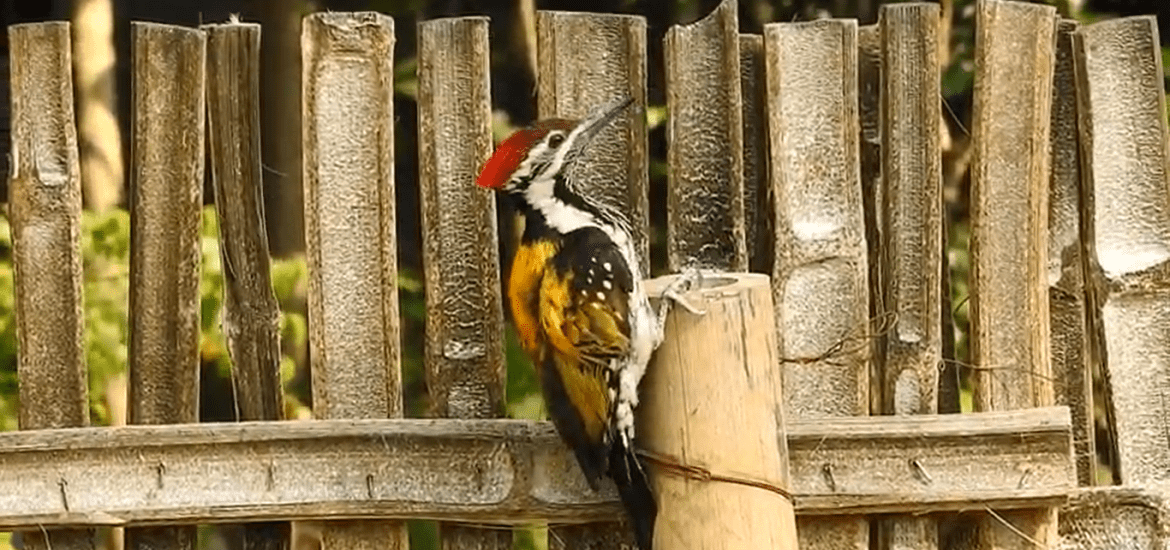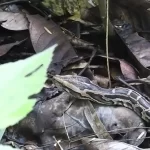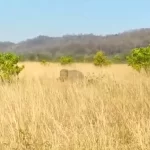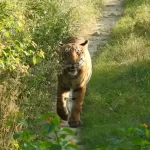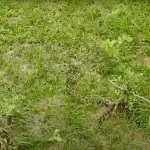Woodpeckers are highly evolved predominantly insectivorous birds with several special physiological features adapted to suit their lifestyle. Their diet includes insects, especially wood-boring insects, grubs, spiders, ants, tree sap, nuts, seeds, berries, fruit, fruit sap, and flower nectar.
Woodpeckers are known to hammer at the tree trunks to reach the insects hiding under the bark of the tree or in the cavities of the trees. A woodpecker’s tongue is very long and meant to reach inside the tree cavities where the tree-boring insects like larvae of tree borers, termites and other such insects are hiding. Woodpeckers peck at the tree trunks with their chisel- shaped beaks with great velocity. The impact thus created can shatter any normal bird’s brain. However, the tongue of the woodpecker goes into a cavity around the brain to create extra cushion to save its brain from high degree of force generated by the impact. Woodpeckers have zygodactyl feet with four toes, the first and the fourth facing backwards and the middle two toes facing forward. This arrangement of toes ensures a steady grip on the vertical tree trunks. Woodpeckers have stiff tail feathers that are used to balance their large bodies on vertical surfaces like tree trunks. A woodpecker never moves upside down on a tree trunk but if it has to come down on the same trunk, it hops backward, always supported by its stiff shafts of their tail feathers.
Recently Jim’s Jungle Retreat naturalist Jeewan Routela recorded this Black-rumped Flameback that was drinking water from the cup-shaped cavity of a bamboo post at the Retreat.
<iframe width=”560″ height=”315″ src=”https://www.youtube.com/embed/CXckFPKB3Oo” title=”YouTube video player” frameborder=”0″ allow=”accelerometer; autoplay; clipboard-write; encrypted-media; gyroscope; picture-in-picture” allowfullscreen></iframe>
